Imagine a train crossing a bridge and a ship sailing over the horizon. Imagine a ship crossing a bridge and a train over the horizon.
This is Rail/Sail, a journey which deploys the imagery of wind, sea, and sail within the context of a post-industrial landscape of Kansas City. A wind-powered railroad vehicle will connect urban and rural concourses, guided by chance and desire rather than reason or economy. This is a strategy of reclaiming — as prairie might overtake a fallow field — which undermines the efficiencies of commodity production and transportation. The project is a way to imagine transportation and cultivation over longer, slower periods of time, upholding the bright spots of the mind’s eye over the blind spots of the market. Ours is a quixotic vision of transportation and trade where the practical and the absurd may intermingle to produce new visions and knowledge.
Rail/Sail is the emergent project of Joe Riley, Audrey Snyder, and Ricki Dwyer. In August 2016 these collaborators take up residence in Front/Space, conducting weeks of research, building, and programming focused on railroads, journeying, and agricultural sites of learning and re-imagination.
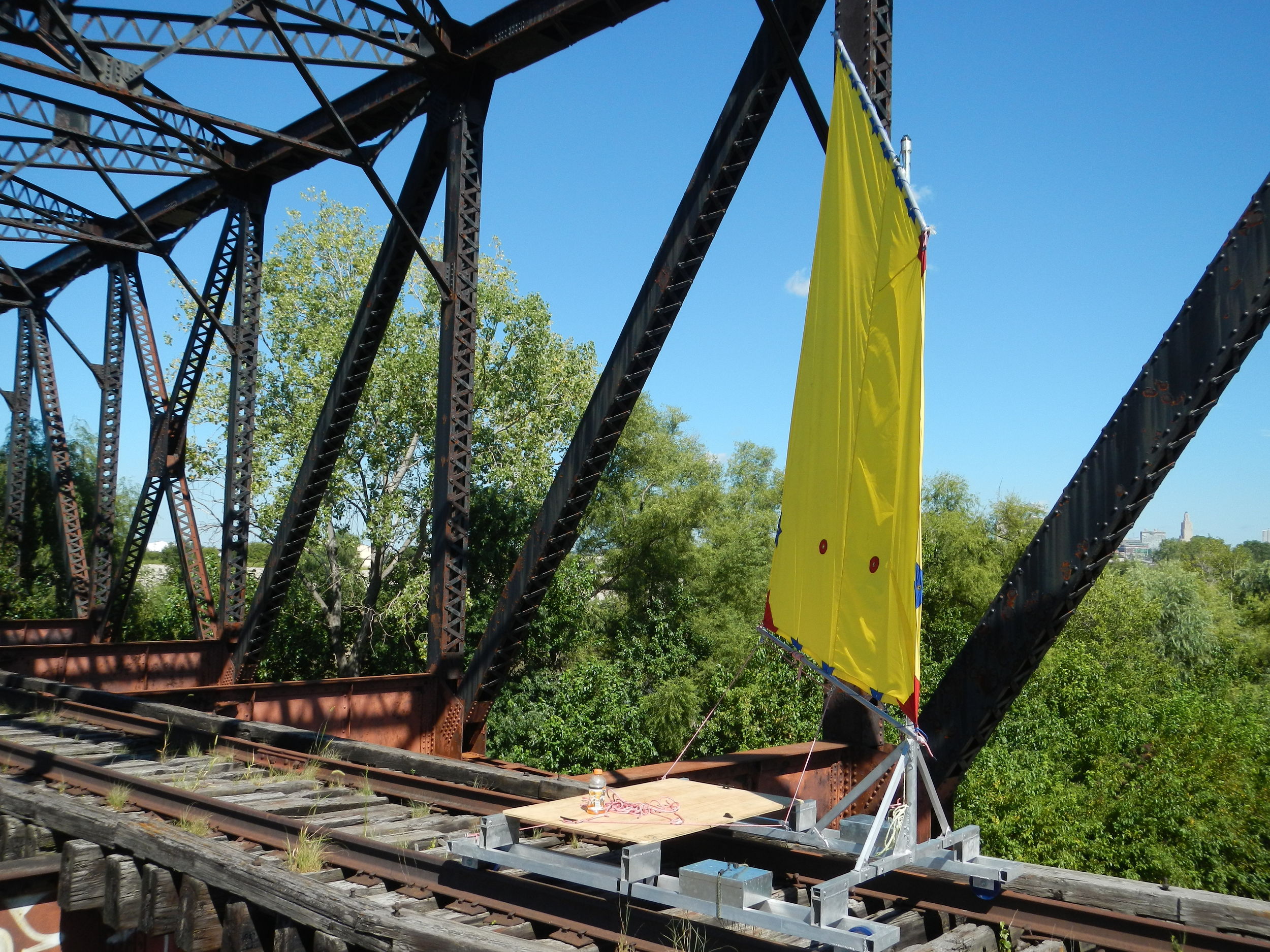
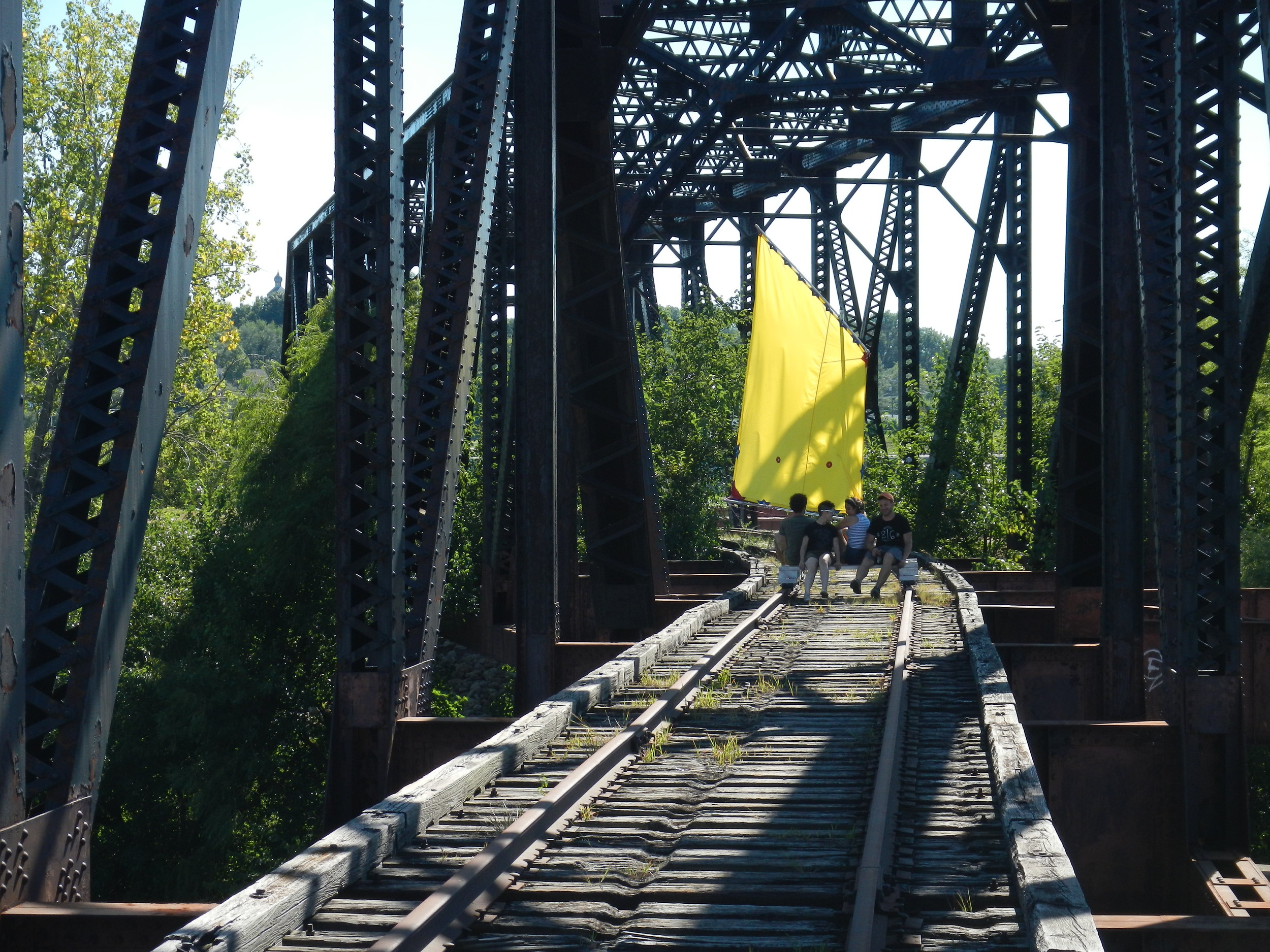
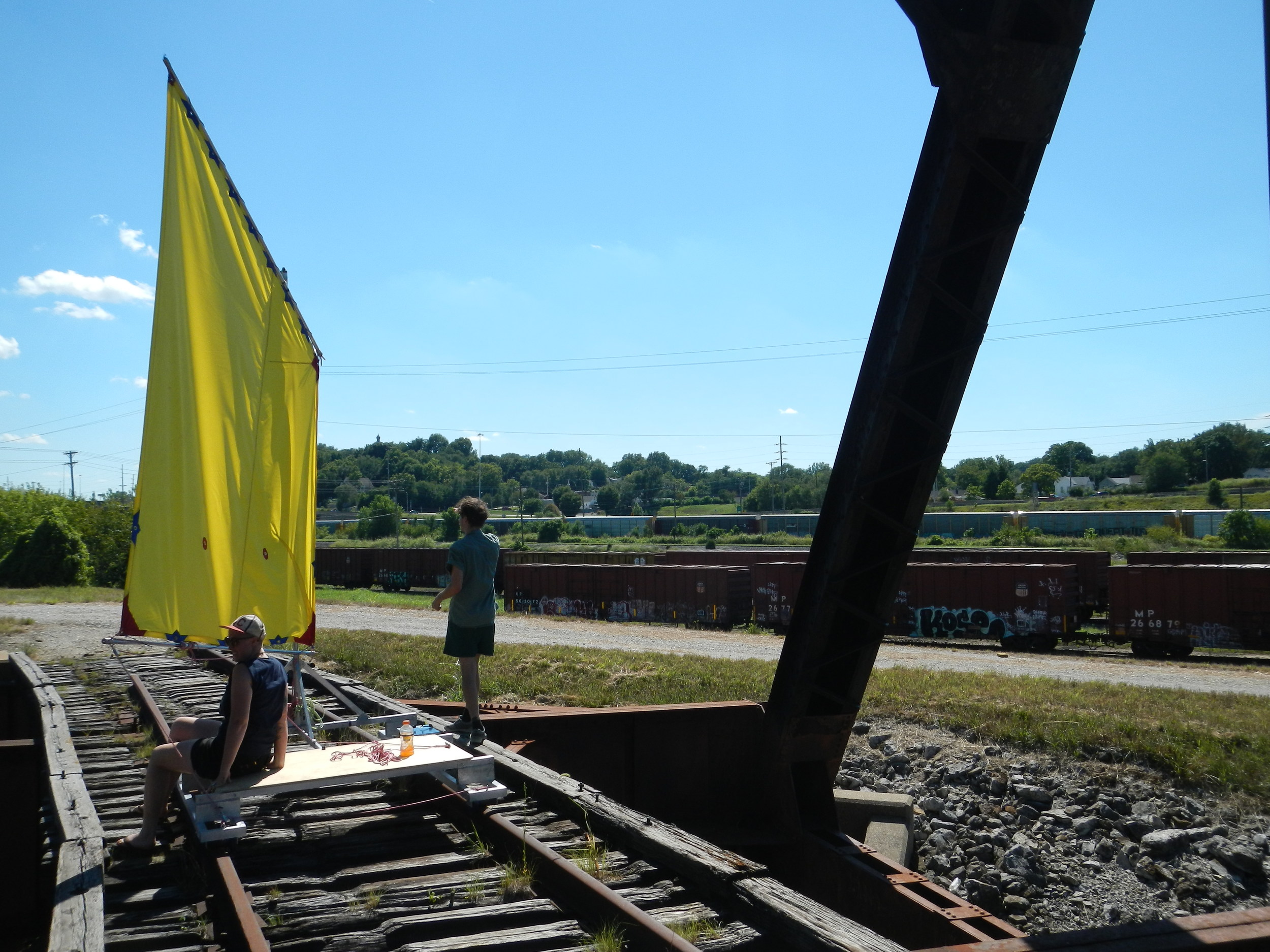
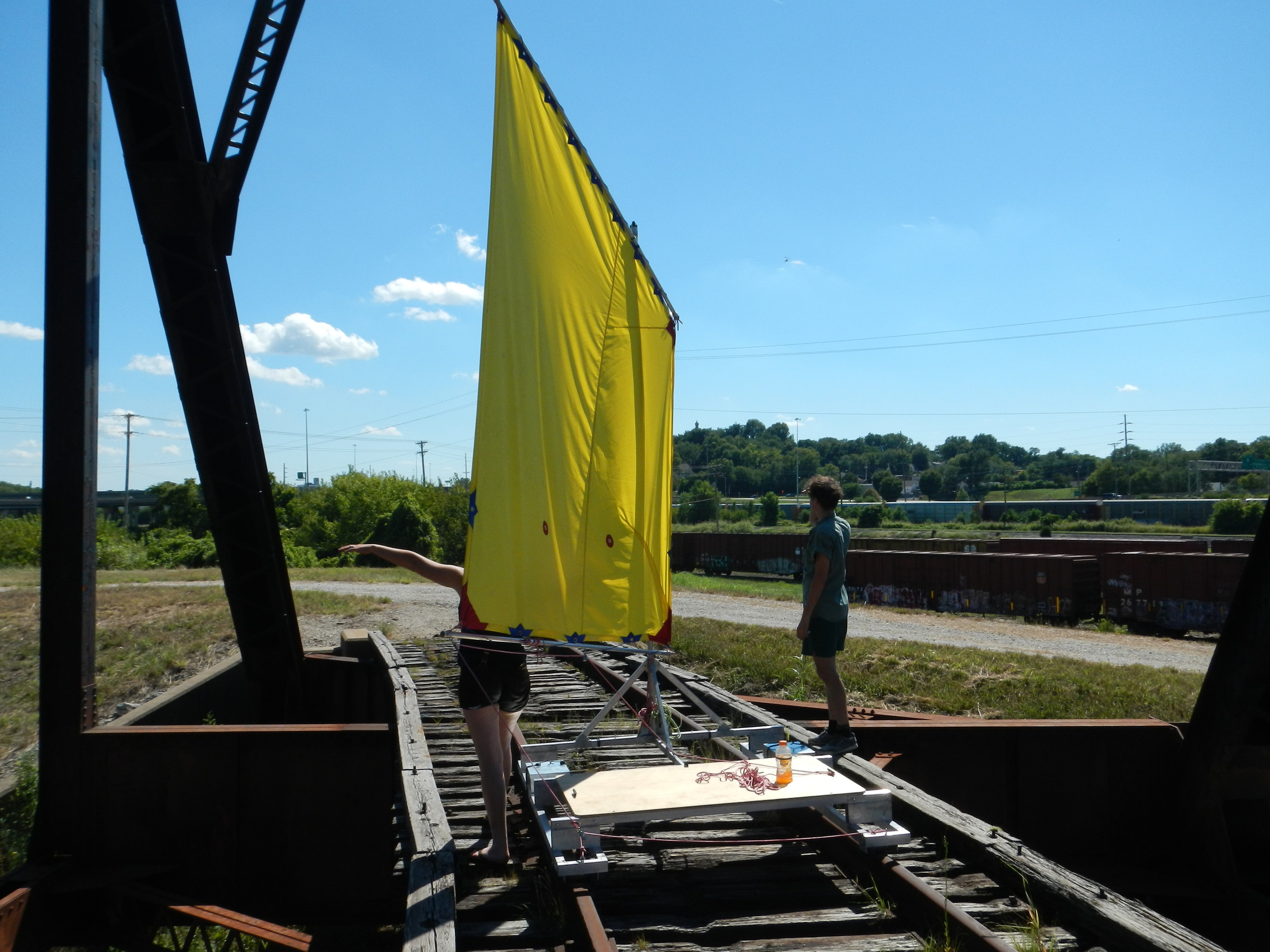
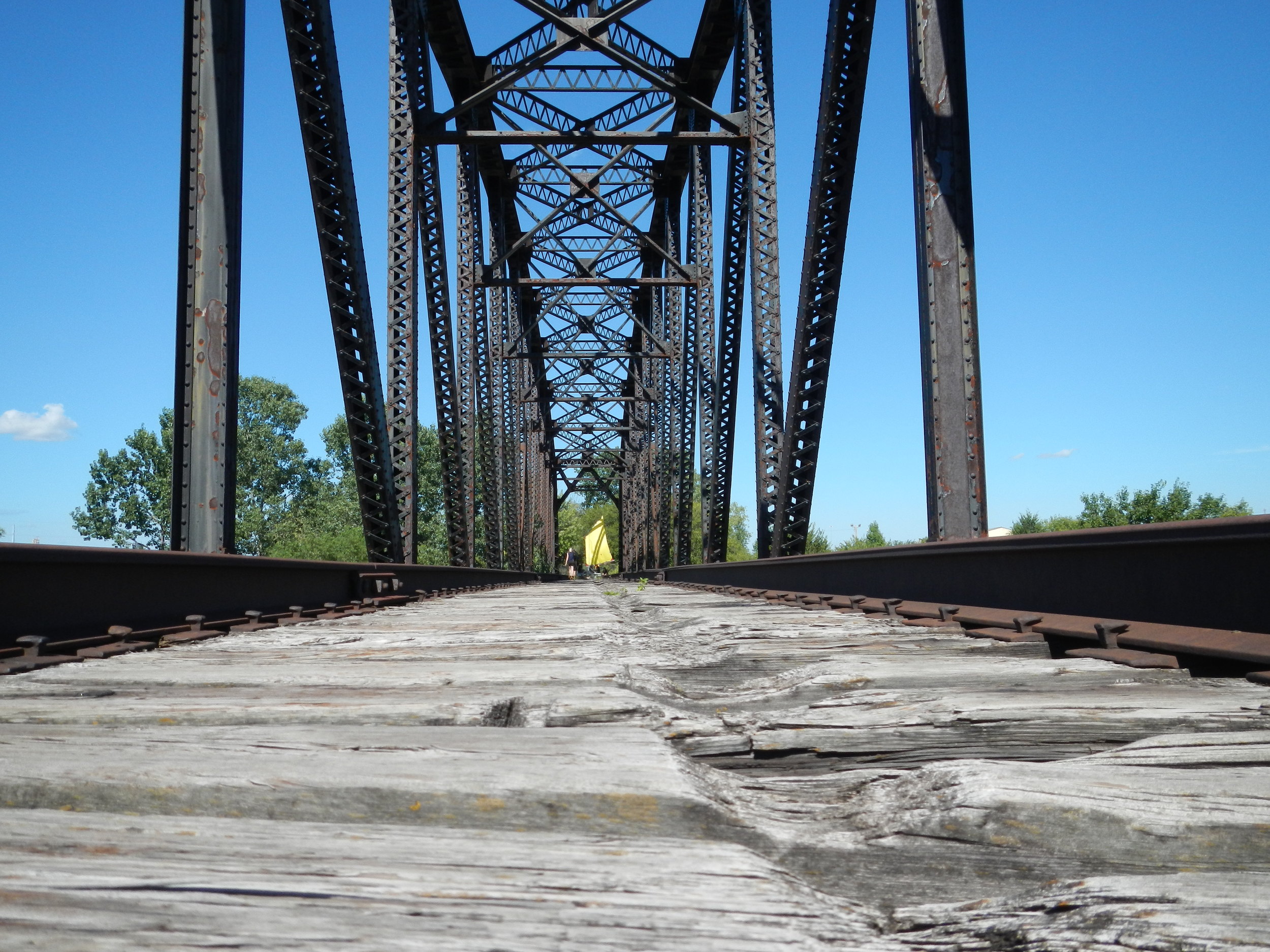
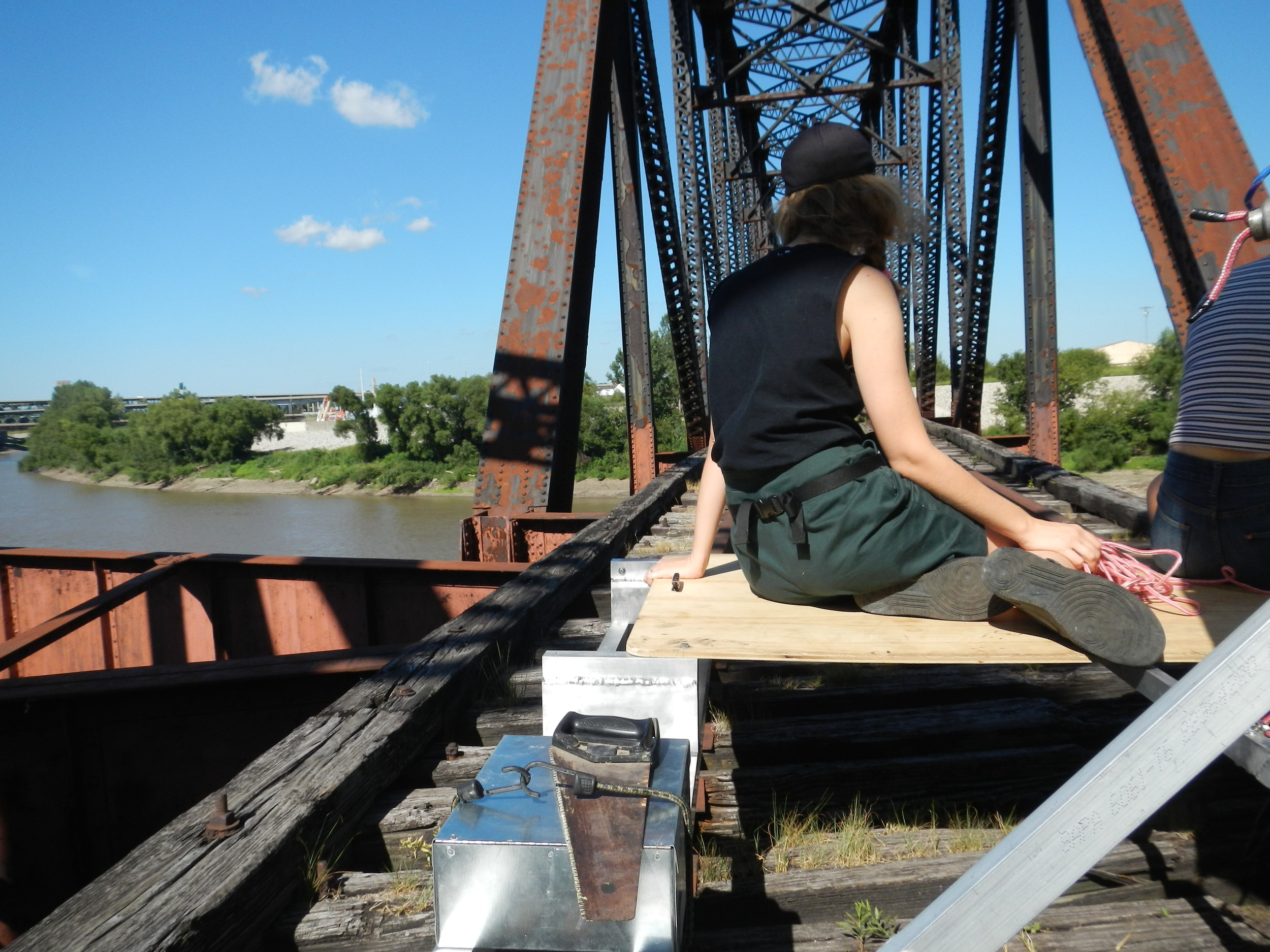
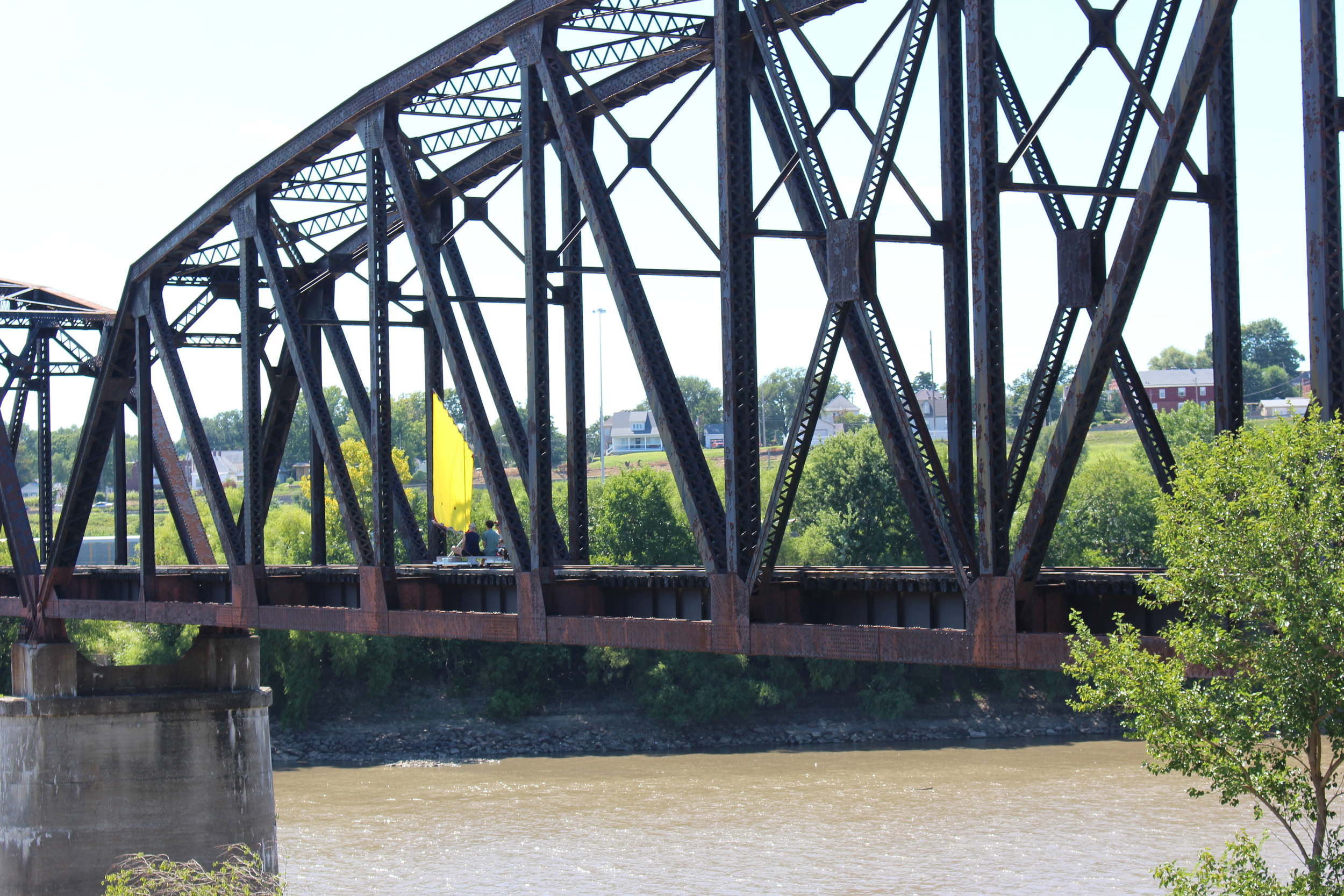

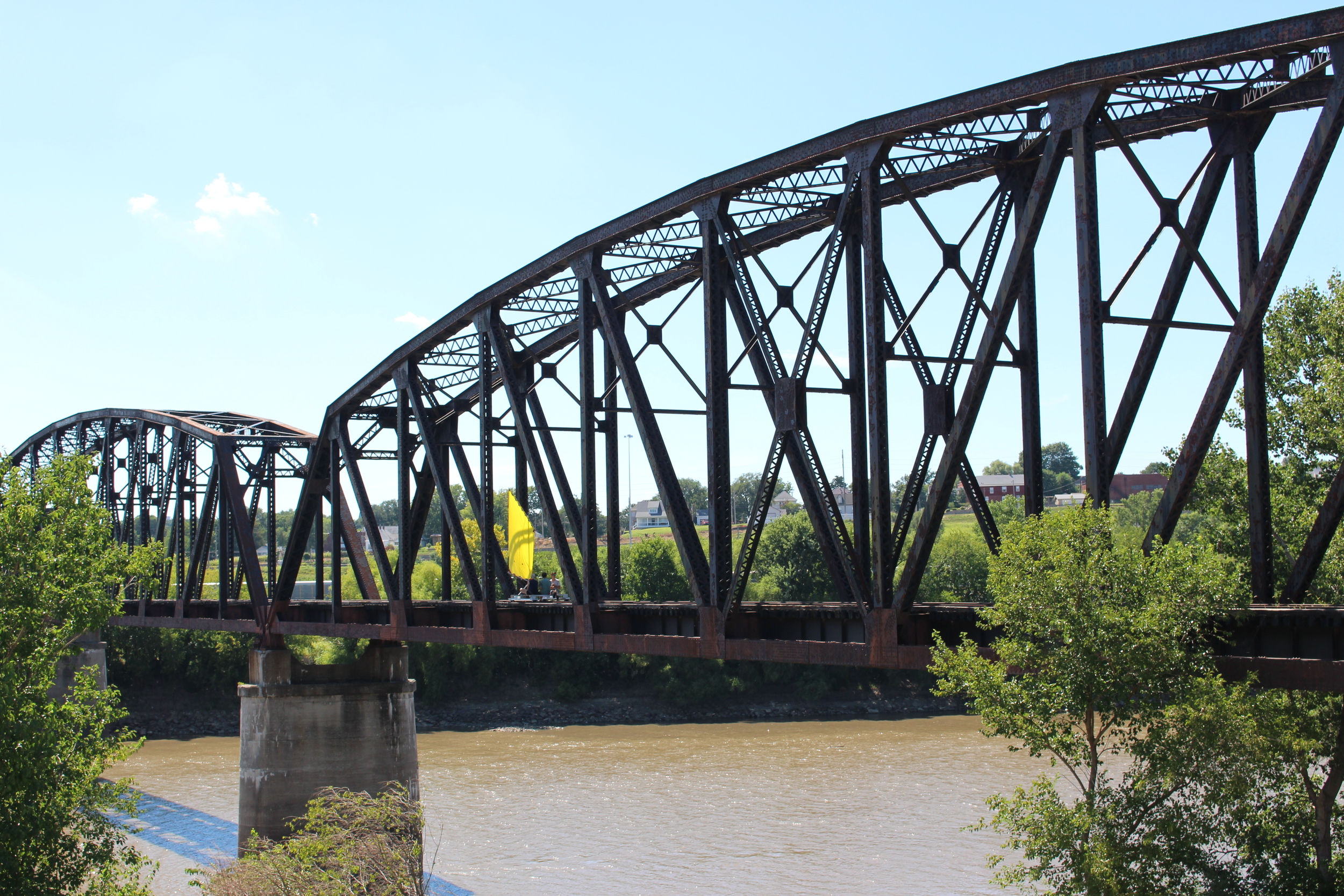


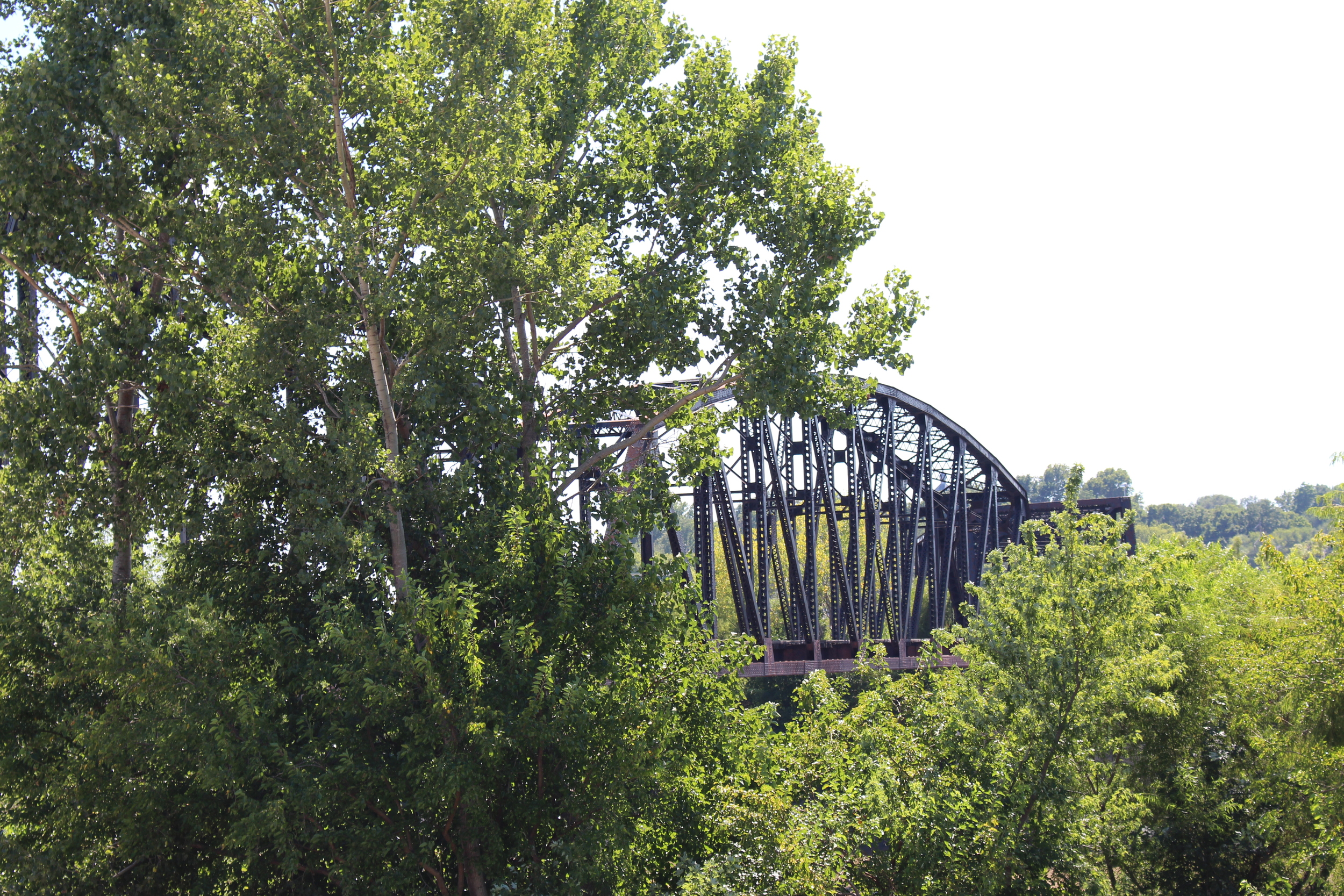
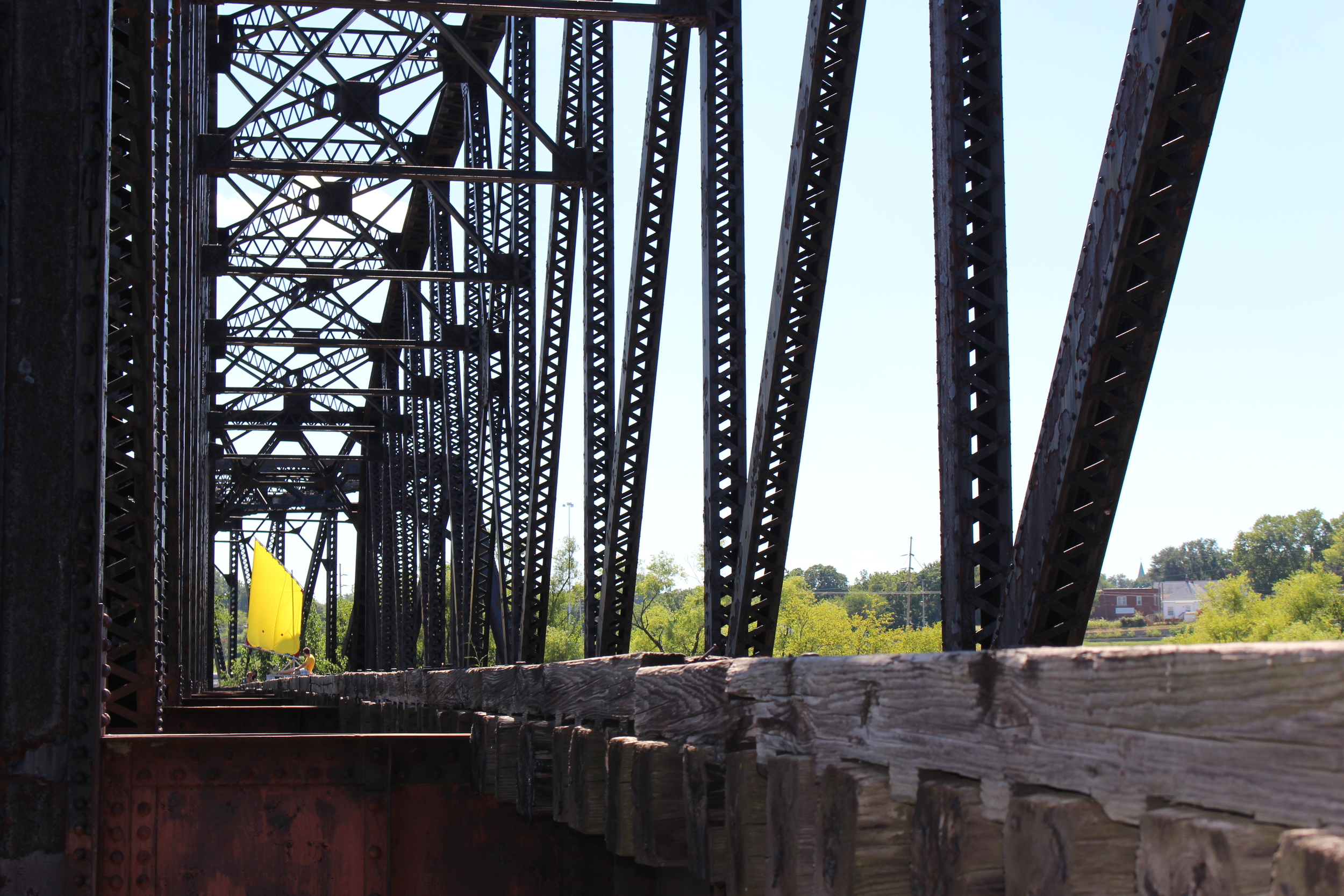


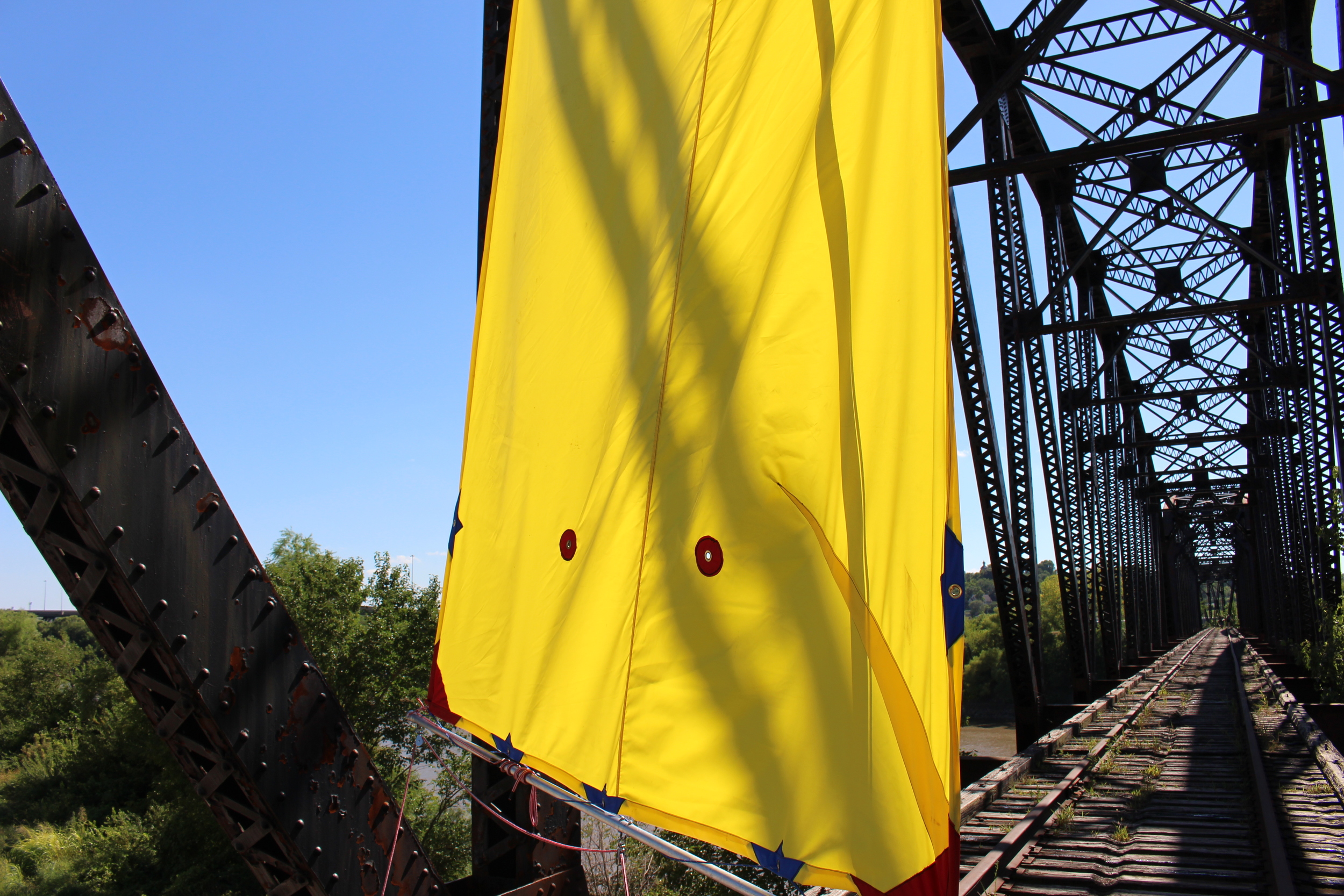

Rail/Sail was first launched in Kansas City, MO/KS — once a grain producing capital of the U.S., ahead of the the great “plow-up” which prefigured the Dust Bowl and defined the Great Depression. Subject to the violence of commodity farming for the market place, fields of wheat became seas of dust. Ever since, the Midwestern U.S. has remained a site where rippling wheatfields are translated into units of mutable exchange. At the collision site of climate change and monoculture based farming our present challenge is to reimagine the configuration of urbanism and ecology in a way that is not dictated by a market.
We began the project by looking at the meeting of land and sea, specifically where railroads infrastructure connects with shipping. These are points of interchange where an industrialized landscape meets the landscape of the sea, sites are where the strikingly different modes of transportation (railroad and sea) are combined through the passage of goods. The abrupt meeting point of railroads and shipping was made seamless by the neoliberal project of containerization which was also a central factor in dismantling organized labor all over the world and abandonment of vast amounts of railroad infrastructure in the US. The network of auto-industry highways and the trucking industry supplanted the railroad and container ships became trains on the sea.
Zooming out from coastal U.S. ports the collision of land and sea re-centers in the middle of the country. The midwestern plains can also be understood as a sea, an inland body of resources ripe for exploitation. This is reinforced by the practices and names of railroad companies such as “Kansas Pacific Railroad," conjuring an image of flow from one landscape to the next as if the plains and the water are one body. This confluence can be further distilled through the image of ships and trains merging together at sites where they were once loaded and unloaded. With Rail/Sail we position ourselves at these abandoned sites of railroad infrastructure and obscured interactions with the sea. The image of the sail powered railroad vehicle becomes a way to better understand the role of capital in these spaces as while imagining adaptation away from efficiency, utility, the annihilation of space and time.




